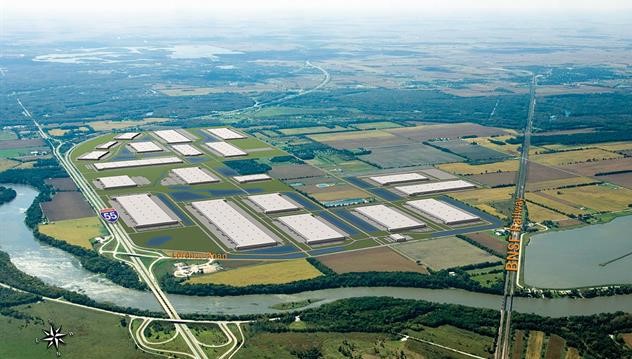 The I-80 region has many large blocks of space available, but its rail connections, and access to labor, make it likely tenants will soon occupy much of the space.
The I-80 region has many large blocks of space available, but its rail connections, and access to labor, make it likely tenants will soon occupy much of the space.
CHICAGO—The Chicago industrial market saw a moderate decline in leasing activity recently, but tenants remain quite active, and that helped fuel an 80.6% increase in construction activity during the third quarter. Developers now have 18.5 million square feet underway, much of it speculative, up from 10.2 million square feet during last year's third quarter, according to statistics just published by Avison Young.
“Some of that has to do with the Southeast WI submarket,” Chris Lydon, a principal in Avison Young's Chicago office, tells GlobeSt.com. This relatively new submarket has a lot of available land, and the start of construction on Venture One Properties' Stateline 94 Corporate Park, a five-building, 1.8-million-square-foot spec project, sparked an 805% increase in construction activity, from 322,173 square feet in last year's third quarter to 2.9 million square feet now. Other areas favored by developers include the I-80 and I-55 corridors, along with the O'Hare submarket.
Overall vacancy continued to trend downward, and now sits at just 5.7%. The I-90 East Corridor, US64 Corridor, East DuPage, and South Chicago, all submarkets that have not seen much new construction, saw drops of more than 100 bps. Overall average asking rental rates increased by 6.6% to $4.66 per square foot, with several major submarkets seeing rates well above $5.00.
Tenants signed 272 lease transactions during the third quarter, totaling 7.1 million square feet, according to Avison Young. That's a jump over the third quarter last year, when users took about four million square feet, but It's a far cry from the heady days of 2016, when leasing activity hovered around 15 million square feet each quarter.
Still, it's enough to sustain the confidence of developers, Lydon says. Furthermore, “institutional buyers still have a very strong appetite for industrial properties in the Chicago market. Developers still have access to enough capital to go forward with their plans.”
However, he also expects that once developers wrap up this round of building, they will hit the pause button, at least in certain submarkets. Mostly that pause will impact construction in the I-80 corridor. Developers there delivered an impressive 7.2 million square feet over the last 12 months, causing vacancy to increase 90 bps to 11.6%.
Most of these building were big box properties meant for regional or national distribution networks. In fact, the seven largest contiguous blocks of available space in the Chicago region, ranging from 810,000 square feet at 30260 Graaskamp Blvd. in Wilmington, to more than 1.2 million square feet at 3300 Channahon Rd. in Joliet, are all in the I-80 corridor.
“This is a submarket where we're going to need to see more absorption,” Lydon says. But I-80 does have a national reputation as a place with great rail connections, along with access to labor, an increasingly scarce commodity in the US. Therefore, it's just a matter of time before much of the space gets occupied. And one or two leases of more than one million square feet “will move the needle very quickly.”
© Touchpoint Markets, All Rights Reserved. Request academic re-use from www.copyright.com. All other uses, submit a request to [email protected]. For more inforrmation visit Asset & Logo Licensing.







